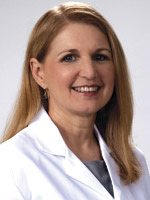 It’s important for women to balance the management of menopausal symptoms with breast health recommendations.
It’s important for women to balance the management of menopausal symptoms with breast health recommendations.
A few key points for women to understand are outlined below.
Prometrium and Hormone Replacement
During menopause, a prescription medication called Prometrium, a progesterone, is often prescribed to women who are also on estrogen and have not undergone a hysterectomy to prevent abnormal thickening of the uterine lining. Sometimes prometrium is prescribed without estrogen to help lessen the vasomotor (hot flashes) during the transition from perimenopause to menopause.
Studies have found that taking estrogen and progesterone together can increase the density of breast tissue, making mammography less sensitive, increasing the risk of breast cancer as well as endometrial and ovarian cancer, and increasing the risk of developing blood clots.
If your physician has prescribed Prometrium to relieve a specific symptom of menopause, it should be utilized at the lowest dose and for the shortest period of time possible.
Breast Cancer Screening
Mammograms are important at this stage in a woman’s life. It is generally accepted by all agencies that screening with mammography in women between 50 and 69 years old saves lives.
Whether to screen women yearly or every other year is often debated and should be determined based upon an individual woman’s risk of developing cancer based on her personal and family history.
The purpose of screening for a cancer is to decrease the mortality from that cancer through early detection. Any risks from mammography are far outweighed by the benefits. Mammography has not been shown to increase mortality from radiation when screening for breast cancer is begun at 40 years old for the average risk woman.
Modern digital mammography has a lower dose of radiation exposure than film screen mammography and the effective exposed radiation dose is 0.7mSV, which is equal to the natural radiation exposure in the environment over a three-month period.
Although an ultrasound examination offers no radiation exposure, it is not a good alternative to mammography. It is not helpful by itself since it is unable to depict calcifications and subtle findings of malignancy seen on mammography. It is only useful to follow up an abnormal screening mammogram.
Breast MRI is much more expensive than mammography as a screening tool. Although MRI is more sensitive than mammography, it is not as specific for identifying which lesions are benign verses malignant and thus leads to more biopsy procedures for noncancerous issues.
Like ultrasound, breast MRI is often utilized to further characterize an area on abnormal mammogram. In women at high risk for breast cancer, i.e. those who have the gene for breast cancer, BRCA 1 or BRCA 2, or their first degree relative has the gene, or women who received breast radiation between the ages of 10-30 years old, MRI is utilized alternating with mammography to detect breast cancer at the earliest stages.
Although the FDA has approved thermography because of its safety, it has very low efficacy and specificity and is not recommended to replace screening mammography. As a matter of fact, in June 2011 the FDA issued a safety communication addressing that specific issue.
There is a new procedure, tomosynthesis, which is a modification of digital mammography and utilizes a moving XRAY source to create a 3-dimensional image and offers considerable promise for women with dense breast tissue and at high risk for breast disease. However it does require slightly longer exposure time, which increases radiation exposure.
In summary, women should: